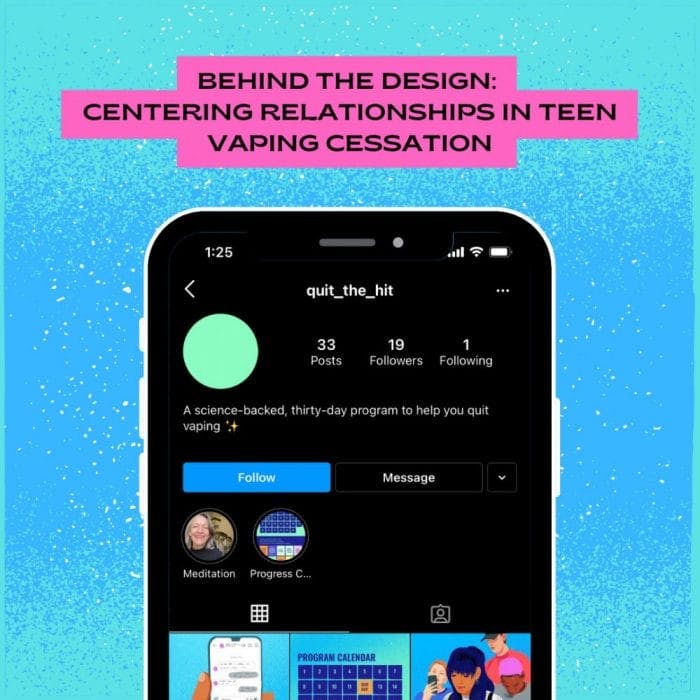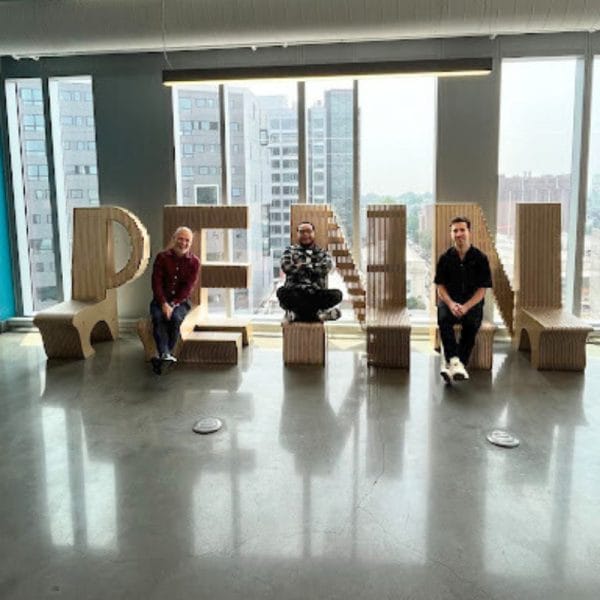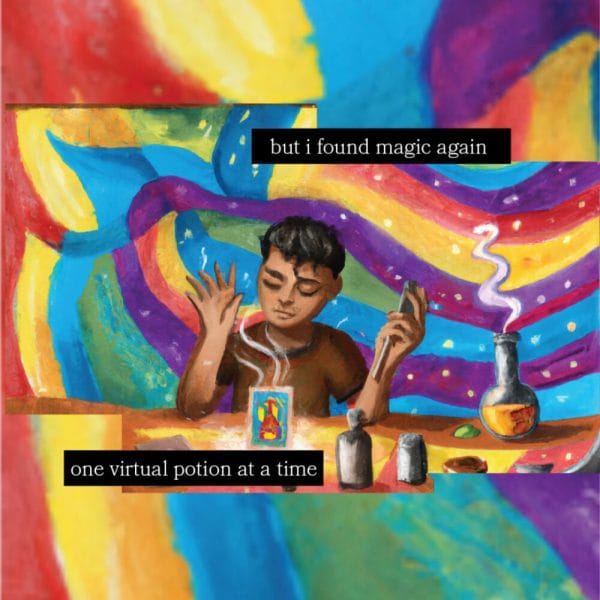Amplify realness: Leverage guides’ unique styles to build authentic connections
Teens shared with us that they often think they are talking to a bot unless proven otherwise. Quit the Hit guides—support group facilitators and coaches—are real people, and while the program framework and values shape their roles, their unique personalities and style are the key to forming and facilitating relationships with and among teen participants.

In the discovery phase of our design process, we found that giving guides the freedom to integrate their own styles into the program structure helped build stronger connections. They sent selfie videos to their groups to put a face and personality behind their text messages. Bri, one of the group guides, built on that idea by sending an individual video to each participant, saying their names to let them know that these aren’t pre-filmed and that she cares about them. Teens we spoke to further expressed that it was critical for guides to share a story showing they were willing to be vulnerable with the group. Through close collaboration with the guides, we learned that loosening the structure of the conventional copy-and-paste program allowed guides to adapt, play on their strengths, and convey more authenticity to teens.
Spark the fire: Encourage speaking up as a way to help others
Once the connections are built between the participant and guide, the goal is to spark a supportive relationship between teens in the group. Similar to the feeling of being on a Zoom call with 12 other people, questions to a group are often met with silence. Our early Quit the Hit groups started with this same awkward dynamic, but we noticed that engagement increased when the volume of questions was dialed back, and the guide was more explicit about the group’s purpose to learn from and support each other through sharing.
In interviews and surveys with program participants, we kept hearing stories that validated the importance of the group dynamic. Teens didn’t want to just help themselves through this program, but were also motivated to help others.







